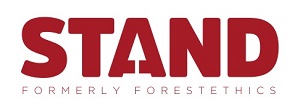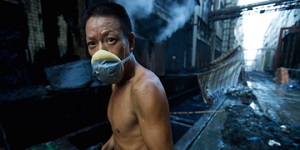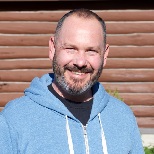We first highlighted the work of ForestEthics in June 2015. Since that time, they have undergone a rebrand. We had the opportunity to connect with them to see where they have been since we last spoke.
By Sandy Cyr
ForestEthics began, very literally, in the forest. From rainforest protection, their corporate campaign work has expanded over the years to take on fossil fuels and big energy, as well as to affect pipeline and oil train infrastructure. As their work evolved, it became harder and harder for people external to the organization to connect the dots between their name and the work that they do.
In 2015, after several attempts at a rebrand, ForestEthics landed on their new name, Stand. “Stand, like a stand of trees – that’s where the name was born from,” says Stephen Danner, Stand’s Director of Development. “Our new name carries that original forest message along with us and yet broadens the scope so that we could tell the story about more activism, grassroots organizing that has also been part of our theory of change, which has never really been core to our external messaging.”
 This rebrand has allowed Stand to tell a deeper story about who they are. Since their founding, Stand has always operated as a cross-border organization. Due to changes in the political landscape in Canada, in 2012, they became three distinct organizations: ForestEthics in the US, and ForestEthics Solutions Society and ForestEthics Advocacy Association in Canada. The rebrand came about just before a new government was elected in Canada, and has helped the three groups to reintegrate and consolidate under Stand.earth. While little has changed internally with the organization, externally, they are now able to create a singular message around a singular cross-border organization.
This rebrand has allowed Stand to tell a deeper story about who they are. Since their founding, Stand has always operated as a cross-border organization. Due to changes in the political landscape in Canada, in 2012, they became three distinct organizations: ForestEthics in the US, and ForestEthics Solutions Society and ForestEthics Advocacy Association in Canada. The rebrand came about just before a new government was elected in Canada, and has helped the three groups to reintegrate and consolidate under Stand.earth. While little has changed internally with the organization, externally, they are now able to create a singular message around a singular cross-border organization.
With change often comes fear. There were some questions early on in process as to whether or not rebranding was going to reduce the power of the brand that the organization had with ForestEthics. “The response to that question,” says Danner, “the objection to it, rather, was that the power of the brand comes from the quality of the work and the relationships that we forge. Transition and change is what our business is. A new name does not change the power of the campaigns that we have been forging since our inception.”
 Stand’s campaigns can take years and sometimes decades to see through to the impacts they are seeking to make. By being strategic, Stand was able to avoid any sort of disruption a rebrand may cause to their markets campaigns. As Stand was sunsetting their successful public campaign with manufacturing titan 3M, they were getting ready to launch a new campaign with Starbucks. Stand conducted the research, prepped strategic pathways forward, identified what on the ground operations would look like, and determined what their demand set was going to be. With the foundation of their campaign strategy in place, Stand chose to accelerate the announcement of their rebrand so that they could go public with the Starbucks campaign.
Stand’s campaigns can take years and sometimes decades to see through to the impacts they are seeking to make. By being strategic, Stand was able to avoid any sort of disruption a rebrand may cause to their markets campaigns. As Stand was sunsetting their successful public campaign with manufacturing titan 3M, they were getting ready to launch a new campaign with Starbucks. Stand conducted the research, prepped strategic pathways forward, identified what on the ground operations would look like, and determined what their demand set was going to be. With the foundation of their campaign strategy in place, Stand chose to accelerate the announcement of their rebrand so that they could go public with the Starbucks campaign.
Like many nonprofits, Stand is always in a struggle to define itself, both externally and internally. According to Danner, ‘telling a cohesive story about who we are can be a challenge. ‘Well, we’re working on forest protection! We’re working on oil procurement work! We’re grassroots organizing in Washington State!’ For a new staff member coming on board – it’s sometimes hard to connect the dots.”
 The rebrand has created a wonderful opportunity for Stand to address this struggle and to really get at what is it that they do. One of the most important lessons that the organization learned from this process was understanding that Stand does not have a singular theory of change. When they worked in the forests of British Columbia, it was very clear for them to connect the dots between corporate power and the targets that they were hoping to move with the leverage that corporate power created. As they continued to evolve, that theory of change began to manipulate, and so Stand’s theory of change, depending on their campaign targets, will actually change. The issues that Stand works in are dynamic, so their theories of change and those related strategies must also be dynamic.
The rebrand has created a wonderful opportunity for Stand to address this struggle and to really get at what is it that they do. One of the most important lessons that the organization learned from this process was understanding that Stand does not have a singular theory of change. When they worked in the forests of British Columbia, it was very clear for them to connect the dots between corporate power and the targets that they were hoping to move with the leverage that corporate power created. As they continued to evolve, that theory of change began to manipulate, and so Stand’s theory of change, depending on their campaign targets, will actually change. The issues that Stand works in are dynamic, so their theories of change and those related strategies must also be dynamic.
Forest protection and forest campaigns will always be a part of who Stand is. As their campaign work has evolved to include fossil fuels and big energy, Stand is able to tell a deeper story about who they are, while continuing to take on issues that threaten our communities and our environments.
Stephen joined the Stand.earth staff in January 2009, bringing with him more than seven years of development and nonprofit management experience. In his previous position as the Interim Development Director for Frameline Inc., he oversaw all foundation, corporate and individual giving programs. As Director of Development at Stand, Stephen plays a leadership role within the development department and manages institutional fundraising activities. He holds a B.A. in Latin American Studies and Literature from New College of Florida.
Sandy Cyr is the Managing Editor for the Philanthropy Journal, and a fan of all things related to the nonprofit sector.






